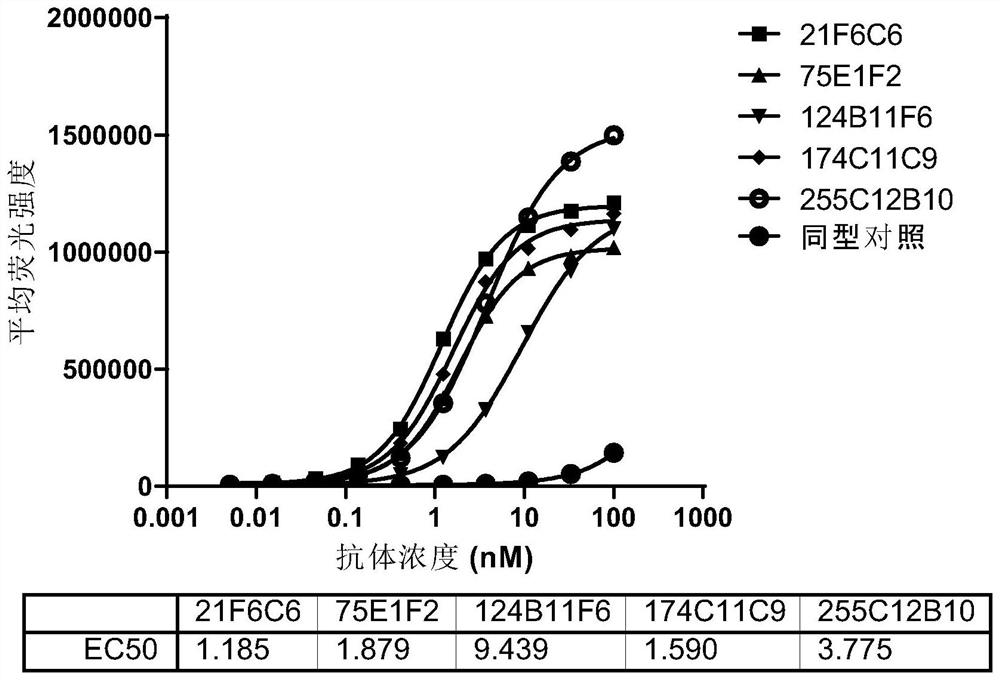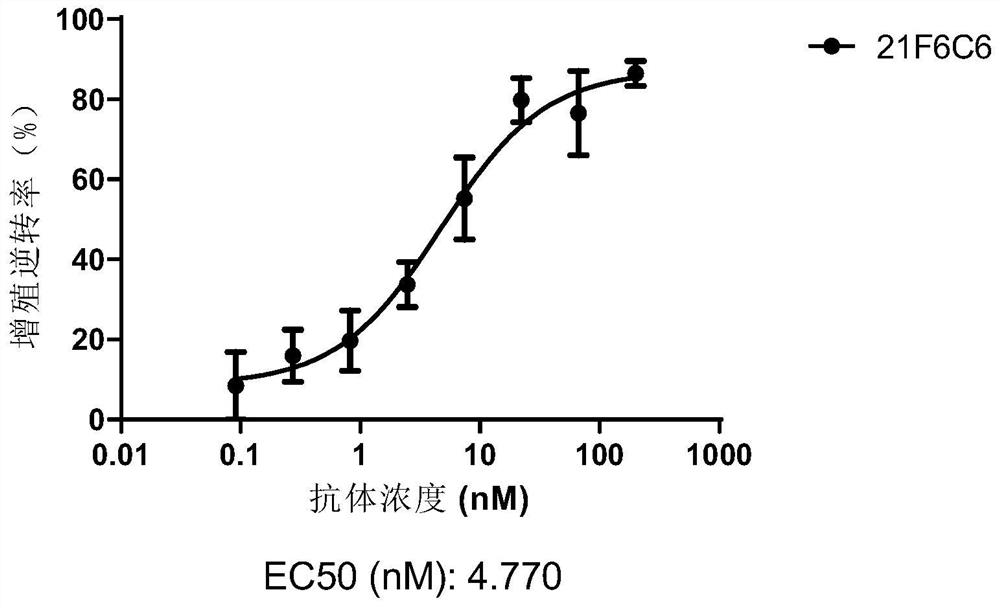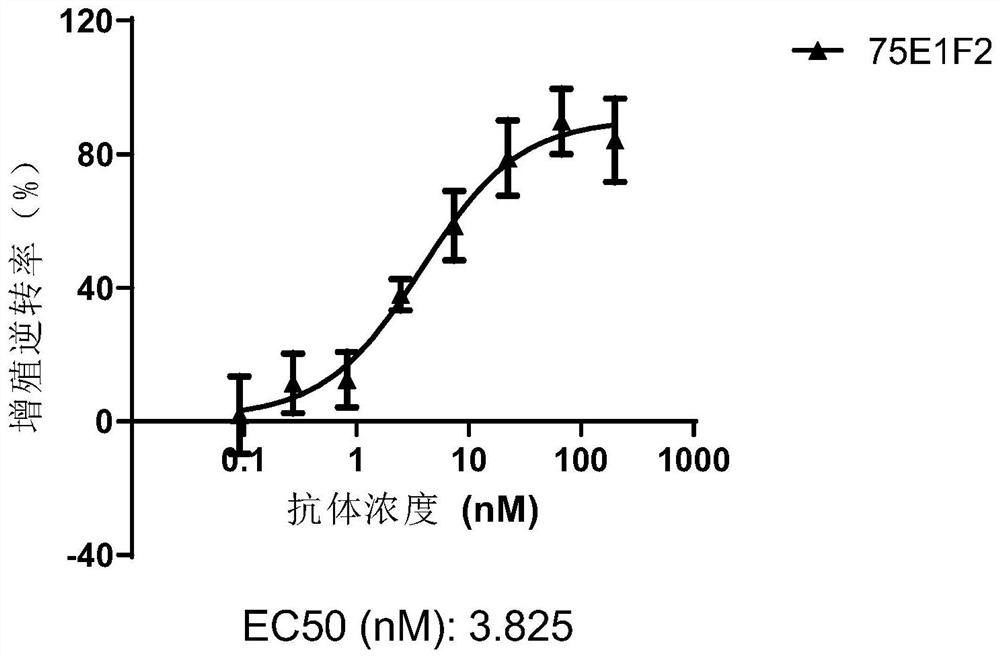Anti-Siglec-15 antibody and application thereof in preparation of medicine
An antibody, humanized antibody technology, applied in the direction of anti-animal/human immunoglobulin, antibody, application, etc., can solve the problem of lack of drugs to treat siglec-15 related diseases
- Summary
- Abstract
- Description
- Claims
- Application Information
AI Technical Summary
Problems solved by technology
Method used
Image
Examples
Embodiment 1
[0118] Embodiment 1, the preparation of Siglec-15 antigen and detection protein
[0119] Use the human Siglec-15 extracellular region (F20-F263) of UniProt Sialic acid-binding Ig-like lectin 15Isoform 1 as a template to obtain the gene sequence encoding the antigen of the present invention and the protein for detection, and the antibody heavy chain Fc fragment (such as human IgG1) or His tag recombination, expressed and purified by HEK293 or Expi293 cells, to obtain the antigen and detection protein of the present invention. SG5-H52H3 (His tag), wherein the human Siglec-15 extracellular region sequence is shown in SEQ ID NO: 75, wherein 1-19 amino acid residues are signal peptide sequences, and 40-158 amino acid residues are "V- set” domain, the 168-251 amino acid residues are the “C2-set” domain; the sequence of the recombinant protein (hS15-hFc for short) obtained by linking the full-length extracellular region of human Siglec-15 with the Fc fragment of human IgG1 is shown i...
Embodiment 2
[0120] Embodiment 2, preparation of anti-human Siglec-15 hybridoma monoclonal antibody
[0121] Fifteen mice (5 C57bl / 6, 5 balb / c, and 5 SJL) were immunized with hS15-hFc emulsified with adjuvant, and then immunized with hS15-hFc or hS15-D1-hFc 2 weeks later. Serum was taken for ELISA experiment to evaluate the antiserum titer. Select mice with higher serum titers for splenocyte fusion. Three days after the last booster immunization, spleen cells were taken for fusion, and a total of 5 rounds of fusion were carried out by means of electrofusion, and 50 hybridoma cells obtained after each fusion were plated in 96-well plates. The hybridoma supernatants were screened for positive clones by binding activity assays, and further subcloned. Positive clones were screened for sequencing by combining activity assays and in vitro immune cell function assays.
[0122] Results: 5 positive hybridoma clones were screened by binding activity test and in vitro immune cell function test, re...
Embodiment 3
[0161] Example 3, the binding of anti-human Siglec-15 antibody to Siglec-15 protein from different species
[0162] The variable region of the antibody obtained by hybridoma screening was combined with the constant region of human IgG1 (N297A) to synthesize chimeric antibodies, which were named 21F6C6, 75E1F2, 124B11F6, 174C11C9 and 255C12B10 chimeric antibodies, respectively. The binding activity experiment of Siglec-15 protein from different species and chimeric antibody was carried out. Siglec-15 protein from human / mouse / cynomolgus monkey species was from Beijing Baipusaisi Biotechnology Co., Ltd. The antigen was coated with 0.5 μg / ml, and the antibody was incubated with the antigen after gradient dilution from 1 μg / ml. The secondary antibody was Anti-Human IgG antibody labeled with horseradish peroxidase, and the OD was read after adding the substrate 450 value.
[0163] Results: All five anti-Siglec-15 chimeric antibodies had binding activity to human Siglec-15 and cynom...
PUM
 Login to View More
Login to View More Abstract
Description
Claims
Application Information
 Login to View More
Login to View More - R&D
- Intellectual Property
- Life Sciences
- Materials
- Tech Scout
- Unparalleled Data Quality
- Higher Quality Content
- 60% Fewer Hallucinations
Browse by: Latest US Patents, China's latest patents, Technical Efficacy Thesaurus, Application Domain, Technology Topic, Popular Technical Reports.
© 2025 PatSnap. All rights reserved.Legal|Privacy policy|Modern Slavery Act Transparency Statement|Sitemap|About US| Contact US: help@patsnap.com



